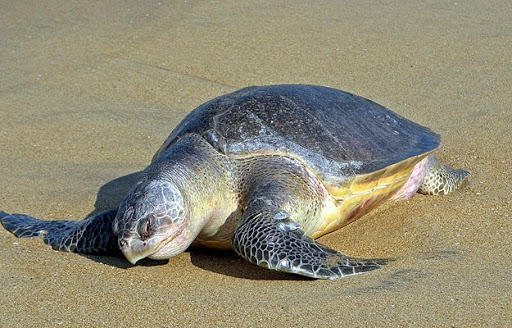Important Facts For Prelims
Olive Ridley Turtles
- 09 May 2020
- 2 min read
Why in News
Mass hatching of Olive Ridley turtles has begun at Odisha’s Rushikulya rookery (near Ganjam district).
- The coast of Odisha in India is the largest mass nesting site for the Olive-ridley, followed by the coasts of Mexico and Costa Rica.
Key Points
- Features:
- The Olive ridley turtles are the smallest and most abundant of all sea turtles found in the world.
- These turtles are carnivores and get their name from their olive colored carapace.
- Habitat: They are found in warm waters of the Pacific, Atlantic and Indian oceans.
- Migration: They migrate thousands of kilometers between feeding and mating grounds in the course of a year.
- Arribada (Mass Nesting): They are best known for their unique mass nesting called Arribada, where thousands of females come together on the same beach to lay eggs.
- They lay their eggs over a period of five to seven days in conical nests about one and a half feet deep which they dig with their hind flippers.
- Threats:
- They are extensively poached for their meat, shell and leather, and their eggs.
- However, the most severe threat they face is the accidental killing through entanglement in trawl nets and gill nets due to uncontrolled fishing during their mating season around nesting beaches.
- Protection Status:
- IUCN Red List: Vulnerable
- CITES: Appendix I
- Indian Wildlife (Protection) Act, 1972: Schedule I
- Step Taken for Conservation: To reduce accidental killing in India, the Odisha government has made it mandatory for trawls to use Turtle Excluder Devices (TEDs), a net specially designed with an exit cover which allows the turtles to escape while retaining the catch.






